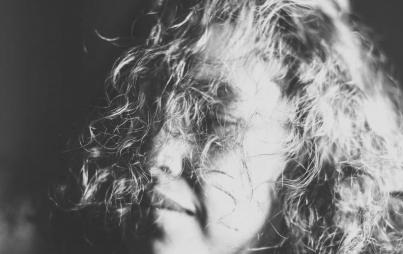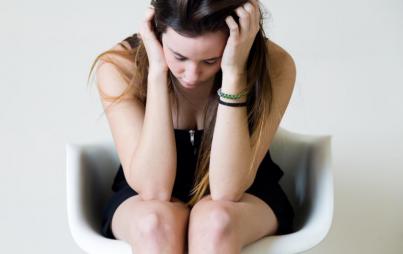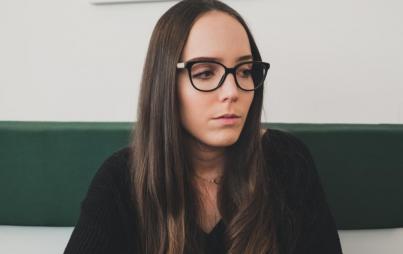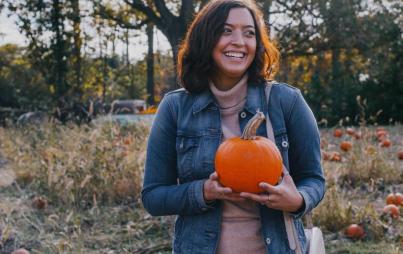
(Image courtesy of the author.)
Halloween has always been one of my favorite holidays because I love the tacky decorations and movies that show what happens when creepy meets kitschy and spooky merges with silly. As a kid, I prided myself in winning elementary school costume contests with my rendition of a hippie and Harriet the Spy. As an adult, I loved dressing up like Lisa Frank and Alice in Wonderland. I loved haunted houses and corn mazes. I’ve done my share of creepy — spending hours decorating for friend’s parties, stuffing limbs of dolls into jars with food coloring.
But as I got older, it started bothering me how some people used Halloween as an excuse for wearing offensive costumes.
I started noticing how often former asylums were turned into haunted houses that mock people with mental illnesses. The first time I noticed this shift was when I attended a haunted house as a teenager that featured a young woman in a white nightgown pretending to slit her wrists. I found this disturbing as I had been struggling with self-injury myself. But I hid my scars underneath my long sleeves and kept going because I didn’t want to be that “unfun” person in my group of friends. For years I kept going, pretending that I enjoyed them. Meanwhile, the scenarios seemed to be getting increasingly extreme like at one haunted house where deranged nurses declared they were “running experiments on homicidal psycho patients.”
Named things like Asylums Island, House of Psychos, and 7th Ward Asylum, these haunted houses hire legions of wannabe actors and horror fanatics to play roving insane inmates and deranged evil doctors.
They treat mental illness as though it’s some theatrical act or horror-show pageant by painting their faces white, chewing blood pellets, and painting on fake bruises.
Some wield cleaving knives, axes, and chainsaws at tourists, while others stare blankly into space. Some of them wear straight-jackets, while others don orange and yellow jumpsuits that are eerily familiar to me.
After all, it was not so long ago when I first rocked my own yellow jumpsuit. Not by choice or chance, but necessity.
You Might Also Like: I'm Mentally Ill — And I Will NOT Be Your Mass Shooting Scapegoat
I will always remember that rainy April day eight years ago when my friends took me to the ER because I was having severe alcohol withdrawal symptoms and suicidal thoughts. When the nurse told me that I’d be admitted to the psychiatric ward, she handed me a pair of those hideous scrubs.
I joked that yellow wasn’t a flattering shade for my pale skin tone, but she insisted it was hospital policy for my first 24 hours on the psych unit. I pretended it was the psych ward equivalent of a robe and slippers awaiting me at a four-star hotel. At least that’s how I imagine it, though I’ve never stayed at one.
The psychiatric ward was a soft place to land when I was full of edges, and the world felt unsafe. The staff was caring and kind; they balanced me on mood stabilizers and alcohol withdrawal medications. They nurtured me back to health through therapy, group activities, games, and decent food that included plenty of my favorite chocolate silk pie. Although it was far from a four-star hotel or luxurious rehab that hosts celebrities, it kept me safe through a time in my life when I needed it most.
Contrary to my experience and many others I know, asylum-themed haunted houses and horror movies send the message that mental hospitals are all terrifying, hellish places where patients are tortured and violent. The truth is that mental hospitals are places where some people go to heal and get better. But this issue is much deeper though than my personal experiences and feelings.
Ultimately, asylum-themed haunted houses make a mockery and sideshow attraction out of the pain of people with mental illness.
By turning people with mental illness into characters at a Halloween attraction, they also send an intentional message that we are to be feared rather than embraced. The haunted houses portraying us all as homicidal, chainsaw-wielding lunatics is especially harmful in a culture where we are already “degraded, excluded, and victimized every day.”
While I think comparing mental illness to a disease like diabetes or cancer can be simplistic and reductive, the fact is that mental illness is every bit as real, deadly, and insidious as other diseases.
Would an old cancer or diabetes ward ever open its doors for a carnivalesque attraction?
No. They wouldn't want the source of so many people’s pain to be made a mockery. The root of the difference here is that unlike these diseases, mental illnesses remain stigmatized. Stigma can create a culture of silence and fear where people are afraid to ask for help, take medications or openly talk about their struggles with mental illness for fear of judgment and discrimination.
I know the consequences of stigma and fear of asking for help intimately. I grew up in the late nineties in the Midwest, a time and place where we didn’t openly talk about our struggles with mental health. Even though I struggled with self-harm and depression, I didn’t get help until I was 18 and didn’t consistently take my medication until I was 24.
Although I can’t go back in time to get help earlier, I try to speak out against harmful, outdated myths about mental illness and encourage people that it is courageous rather than shameful to get help.
Luckily, we have made progress in shattering this stigma by stopping some of these harmful Halloween traditions, especially thanks to advocacy efforts by the National Association of Mental Illness. Cedar Fair removed Asylum Island from its list of attractions at the Kansas City Park in 2014 and other two parks in 2016.
This Halloween I hope we all have fun, dress up in costumes, relish in horror movies, spook each other out, and go to haunted houses. But I hope we can do so without playing up harmful, outdated stereotypes that perpetuate stigma.








